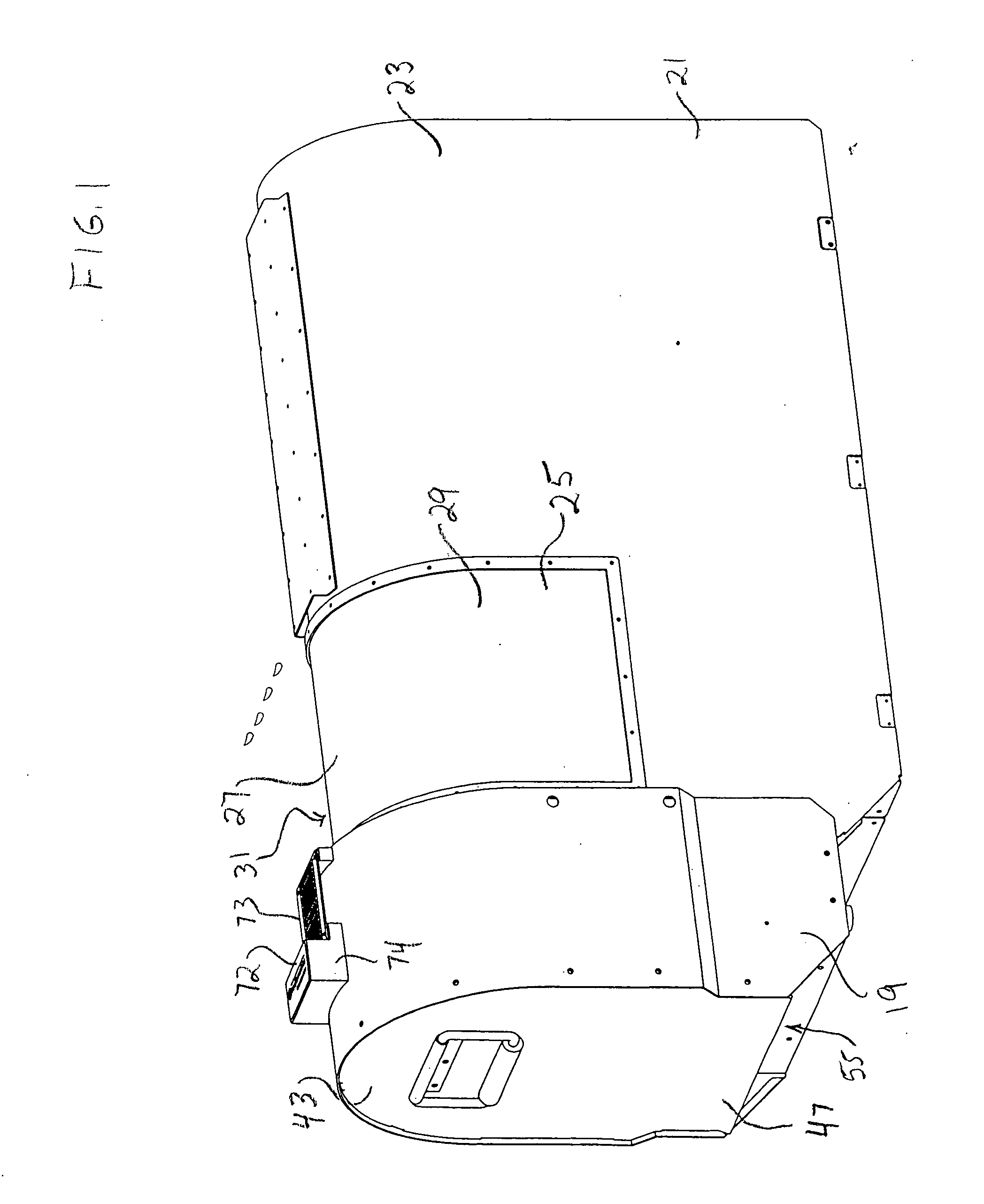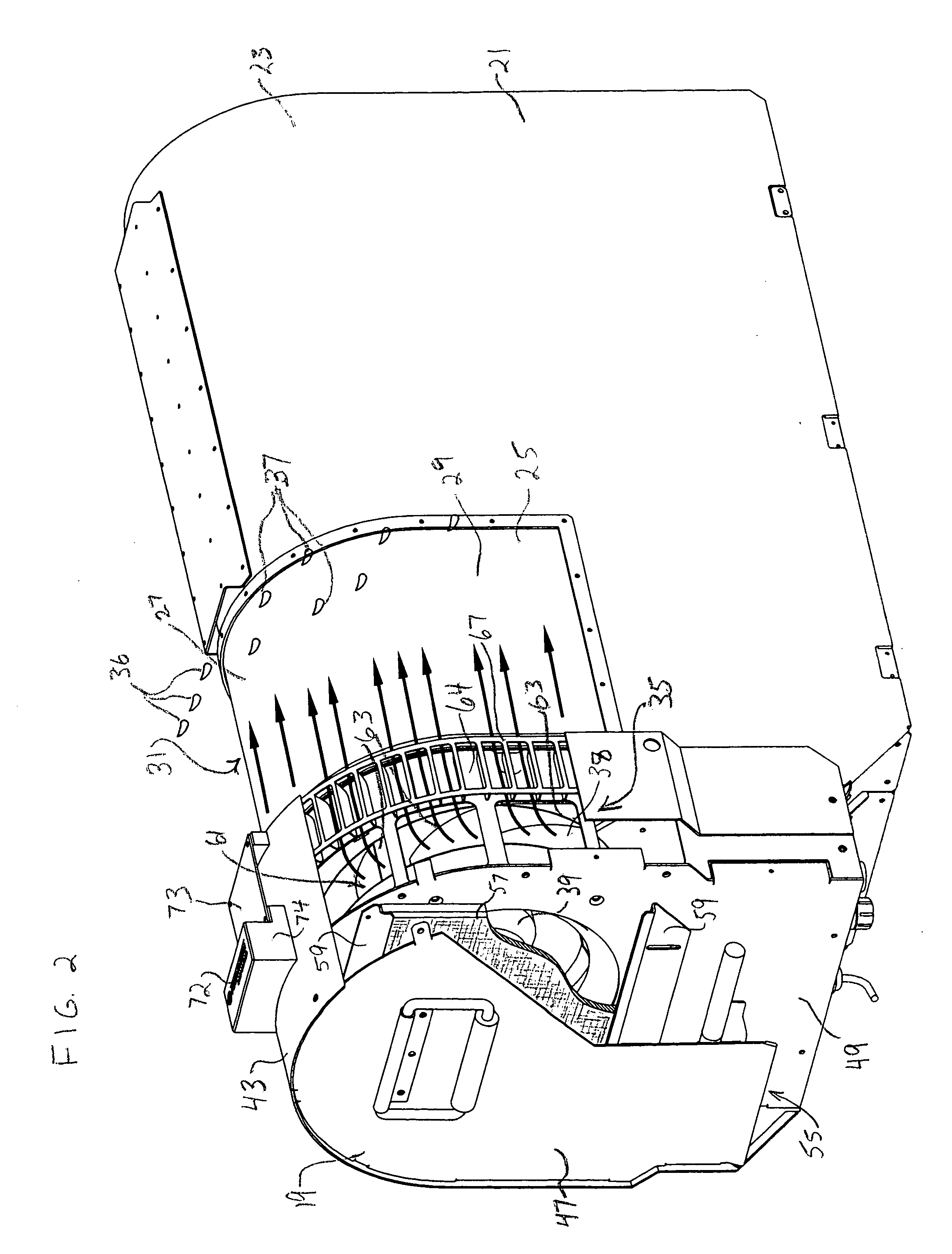Precipitation effects mitigation at antennae systems
a precipitation effect and antennae technology, applied in the field of instruments, can solve the problems of affecting the operation of microwave radiometers, erroneous high, and general severe degradation of microwave radiometers, and achieve the effects of reducing the number of precipitation effects, and accurate operation
- Summary
- Abstract
- Description
- Claims
- Application Information
AI Technical Summary
Benefits of technology
Problems solved by technology
Method used
Image
Examples
Embodiment Construction
[0029] A first embodiment of an apparatus 19 for mitigating precipitation effects is shown in FIGS. 1 through 4 in association with microwave radiometer 21. As is known, microwave radiometer 21 includes an instrument housing 23 having an antenna system with a window 25 thereat. For use in a radiometer, window 25 (a radome having both upper surface 27 and lateral, or side, surfaces 29 and 31) is preferably formed from material which is nearly transparent to the broad band microwave signals of interest (Teflon, for example). Housing 23 protects the instrument and antennae (a radiometer with feed horn antennae of known configuration, for example) from the elements.
[0030] It should be appreciated that when the term “window” or “dielectric window” is utilized herein, any part of an antenna system in an instrument utilized to protect the actual antenna of the instrument in intended within the scope of such terminology, irrespective of type (dielectric windows, covers, protective films, f...
PUM
| Property | Measurement | Unit |
|---|---|---|
| force | aaaaa | aaaaa |
| velocity | aaaaa | aaaaa |
| hydrophobic | aaaaa | aaaaa |
Abstract
Description
Claims
Application Information
 Login to View More
Login to View More - R&D
- Intellectual Property
- Life Sciences
- Materials
- Tech Scout
- Unparalleled Data Quality
- Higher Quality Content
- 60% Fewer Hallucinations
Browse by: Latest US Patents, China's latest patents, Technical Efficacy Thesaurus, Application Domain, Technology Topic, Popular Technical Reports.
© 2025 PatSnap. All rights reserved.Legal|Privacy policy|Modern Slavery Act Transparency Statement|Sitemap|About US| Contact US: help@patsnap.com



